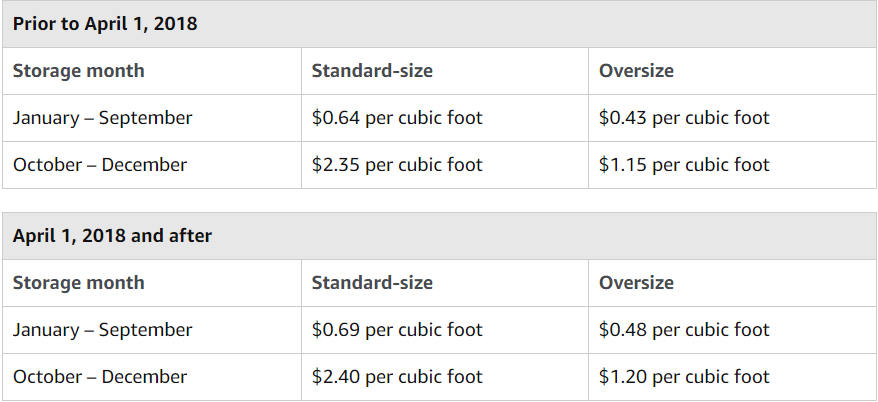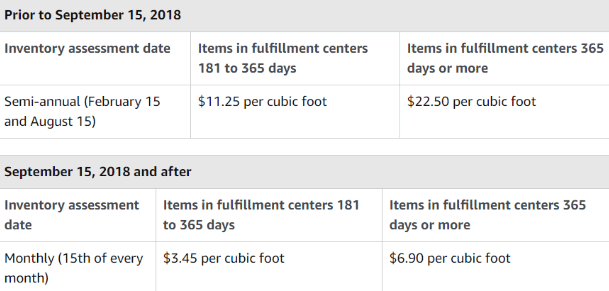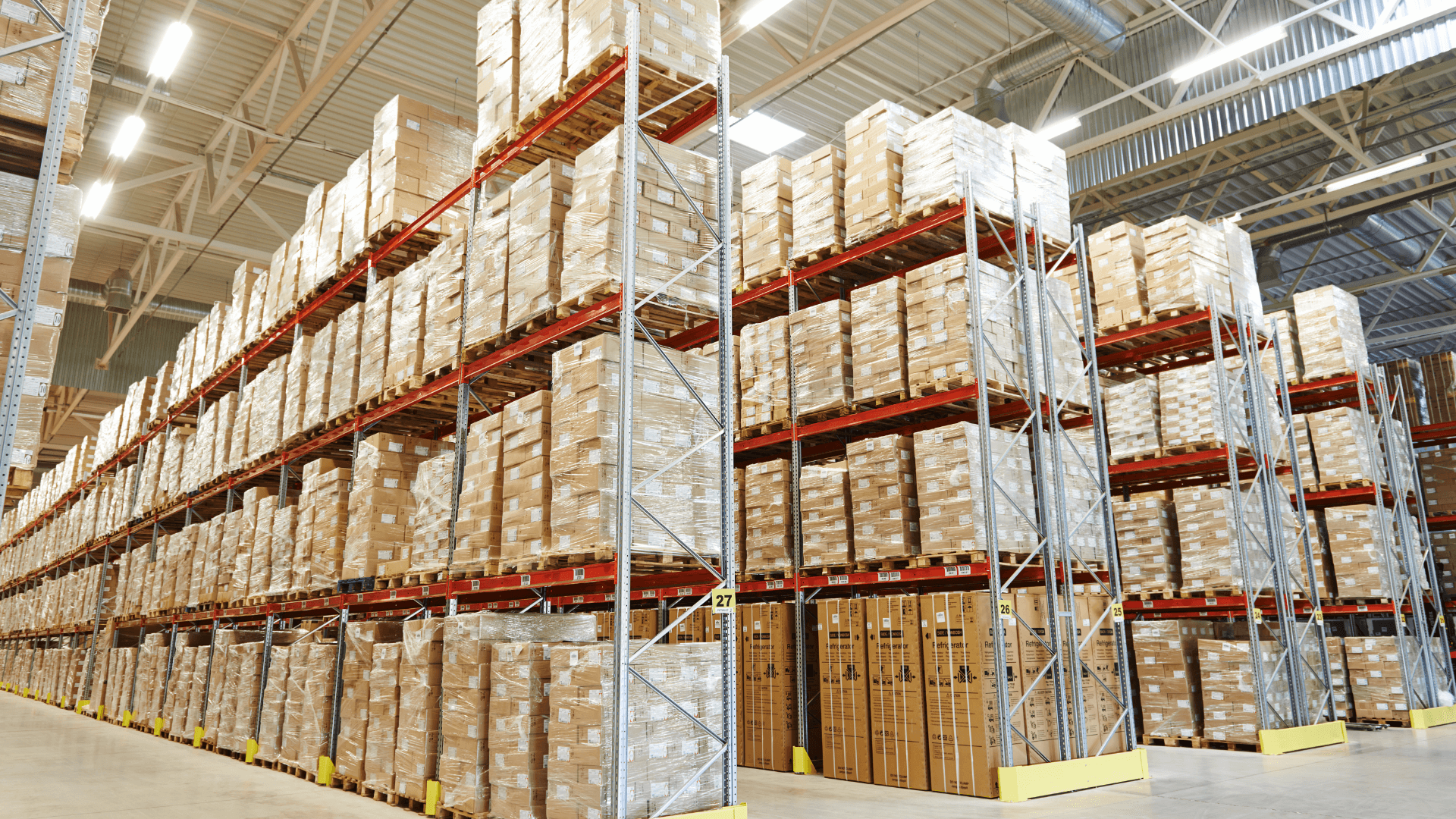If you’re selling on Amazon, you’ve probably heard about the new FBA storage fees being implemented this year, and like many sellers, perhaps you’re feeling a little apprehensive about it.
The seller community has been in a bit of a panic about the whole thing, with people unsure of why it’s happening, how it will affect their business, and even whether they can still afford to sell on Amazon. I’m going to answer all these questions, and I’ll preface it all by saying this: Don’t Worry.
E-commerce is a fast-paced business - you don’t need me to tell you that. Product trends, platform updates, customer behavior - things change, and we have learned to grow and change with our business to ensure success, but that doesn’t need to be a scary process.
Ask yourself this: why do you sell on Amazon in the first place? I think it’s because you can recognize an opportunity when you see one, and that’s exactly what this is - an opportunity. You’re not getting ripped off, and you won’t get squeezed out by people with deeper pockets - quite the opposite.
Casual sellers who simply read the update and think things are getting too expensive might well be inclined to leave, and for those willing to educate themselves and adapt to the changes, that just means more business to go around.
Let’s dive in!
Why is Amazon changing the fees?
Amazon isn't just trying to squeeze more money out of you - as always, they’re just looking out for their bottom line and trying to run a more efficient business. While Amazon offers fulfillment services, they’re not aiming to serve as a long-term storage solution for your business. Their turnover is massive, and they want to keep it that way. Millions of items left sitting in storage for months aren’t going to make Amazon as much money as they would if they were sold and quickly replaced, regardless of the FBA storage fees.
This isn’t the first time Amazon has made changes like this, and anyone monitoring their decisions can see the trend clearly. What started off as a yearly fee changed to a bi-annual storage fee assessment. Until recently, the fees were calculated and charged on February 15 and August 15 of every year.
Why? The idea is to encourage sellers to do what they do best - sell more products, and a higher turnaround means the Amazon storage space is being put to better use.
The changes are the latest step in a carefully cultivated effort to streamline the Amazon business model into one where sellers operate at maximum efficiency and generate the highest profits possible, and it’s that kind of business ethic that has made Amazon what it is today.
What are the Amazon fee changes?
There are scheduled changes that will essentially increase the cost of long-term storage. To find out about which products are subject to long-term Amazon FBA storage fees, you can consult the Inventory Age and Inventory Health reports, which will list the ASINs that are affected.
If you submit a removal request before the new fees are assessed, you’ll avoid the charges - even if the stock is still in the warehouse.
Monthly fees
The first change regards the overall monthly fees, which will increase slightly per cubic foot of stored goods. Like all the changes, this also applies to sellers using Multi-Channel Fulfillment and FBA Small and Light programs.
Taken from the Amazon site: “Starting April 1, 2018, monthly inventory Amazon FBA storage fees will be increased by $0.05 per cubic foot for standard-size and oversize items. This change will first be reflected in May 2018 charges for storage that occurs in April 2018.”
9 things the top 1% of Amazon sellers do. Want to steal them?

So, Amazon has introduced a $0.05 increase on each cubic foot of stored goods. To some, this may not seem like a big deal - sellers with large inventories or low profit margins are quite worried about it however, and I can understand that. FBA storage is more expensive now, there’s no way around it.
The solution, of course, is ensuring a higher turnover of products that don’t require long-term storage, and I’ll get into that a little further down in the article. Let’s take a look at the other changes first.
Amazon FBA long-term storage fees
Instead of charging every six months, Amazon will begin charging a monthly rate instead starting in mid-September 2018. For people continuing to store their goods for months or years at a time it’s a significant increase.

Let’s do the math for a second. At the moment, if you have a cubic foot of goods stored in an Amazon warehouse for 181 days, you’ll pay $11.25 for those six months up to a year. Storing goods over a year costs $22.50 - that’s how it works right now.
After September, however, you’ll be charged monthly. Let’s say you have a cubic foot of goods stored in an Amazon warehouse for six months - every month, you’ll need to pay $3.45. After a year, it’s $6.90. After six months, if you were to continue to store goods for six months in a row the cost would be $20.70 in total per cubic foot, which is almost double.
What’s the big idea? Is Amazon trying to put you out of business? Of course not - as a seller, you are their business, and they’re just changing the business model. Amazon doesn't want you to pay double the storage fees - this is a measure to encourage sellers not to enter long-term storage at all, not unless they have to. By increasing the fees and assessing monthly, they’re achieving two things.
One: Amazon staff now have a monthly assessment of what will probably be a more varied inventory. Compared to waiting six months to two massive bulk assessments, this will probably save them time and money, freeing up their staff for other tasks.
Two: Amazon will use their storage space for the intended purpose. Briefly storing goods before they’re sold to make room for the next batch, not long-term storage.
Yes, some goods have an inherently slower turnaround, and Amazon will still accommodate that, but they’re sending a very clear signal to all sellers with the new update - avoid long-term storage unless you absolutely need it, because now it’s going to cost you a lot more. Sellers are going to have to adapt and make some changes - but those changes will benefit you as well as Amazon if you do it right.
Minimum long term Amazon FBA storage fees
Here’s another change, and it applies to long-term storage of goods stored over a year. Beginning in August, each individual unit will incur a cost of $0.50 charged on the 15th of every month, and that’s in addition to the fees per cubic foot.

Is anyone freaking out yet? Let’s take a moment to think about what kind of goods usually need to be stored for over a year. Items with a faster turnaround are usually inexpensive and small - we’re talking about phone chargers, bracelets, electronic accessories. If you have a case of USB cables sitting in a warehouse for over a year, there’s an issue with your business model - maybe the prices are too high, maybe the listings aren’t optimized - whatever it is, the profit margin of those items would get eaten up if they were hit with a $0.50 charge per unit.
Again, Amazon isn't trying to trap you here - they don’t expect their charges to kill profit margins, because the goods they charge are aimed at typically large, expensive items with slow turnarounds. If you’re wholesaling grand pianos or antique furniture, odds are you’re going to have certain items in storage for over a year, but the $0.50 charge isn’t going to do much damage there at all.
What it will affect is casual sellers using Amazon as a storage locker for goods they’re not making any real effort to sell. People who’ve dipped a toe into ecommerce and have a few crates of books stashed away long-term will be affected by this, and those are the kind of sellers Amazon are trying to get through to here. The message? Make up your mind! You’re either an e-commerce seller or you’re not.
Amazon is stepping up its game, and that means that sellers have to do the same - anyone committed to their business will have a challenge in the coming months as they rethink their pricing and/or their inventory choices, but they can also look forward to gaps in the market ready to be filled as non-committed sellers fly the coop.
How do these FBA long-term storage fee changes affect your business?
It all depends on the kind of business you’re running. Do you need to start micromanaging your inventory, stressing out about the daily comings and goings of your products? No. What you do need to do, before anything else, is to start actively managing inventory that’s been in storage for a long time.
The new model doesn’t allow for products to be left forgotten in storage. Review your inventory and start with the oldest products, working your way through your stock. Do you have any products that have been in storage for months, or years? It’s time to start thinking about how you can shift that inventory. Like with any such change, this means extra work, extra risk, and extra opportunity to expand your business and generate more profit.
Maybe you need to reprice your Amazon inventory to accommodate for the new changes. Don’t worry too much about the competition - everyone else will be considering the issue of the new fees as well! It might be that you can handle this by making a few quick adjustments and optimizing your listings, but if you’re running a large business with a significant amount of stock, it’s time to start thinking of the bigger picture.
Stock liquidation services
You don’t have to get this all done by yourself straight from Amazon. Changing your business model with Amazon is a big move, and if you can adapt to sell items with a high turnaround that don’t require long-term FBA storage, you’ll be making more profits than ever. In the meantime, it’s time to cut the dead weight, and that means getting rid of the products that don’t fit with the new model.
By liquidating stock, you might take a hit on profits, but it’s better to cut anything that might burden you with expensive fees now while you can and focus on your long term business plan. Sites like Shnoop, Tanga, and others offer bulk pricing and wholesale opportunities to high volume resellers, meaning you can use the site to unburden yourself of inventory that’s slowing you down
Liquidation.com provides an in-depth service that allows you to list your inventory to over 1 million users and offer discounts that will help you shift your goods and look to the future.
The key takeaway here is adaptability - was liquidating your stock at a discount rate part of your original plan? No, probably not. But the simple fact is that inventory that takes too long to sell doesn’t have a place in Amazon’s new plan.
While other sellers are wringing their hands and worrying about lost earnings, you can use this as your opportunity to move up in the world, getting rid of whatever doesn’t fit with your new business plan so you can start turning over stock at an even faster rate. Speaking of which…
Pick inventory that sells fast
Once you’ve liquidated your old stock for having too low of a turnaround rate, the last thing you want to do is replace it with more of the same! Look for items that sell fast so you can avoid the Amazon FBA long-term storage fees altogether. Things are going to change over the coming months in the Amazon marketplace, and now is the time to position yourself for success.
Getting in the right market research and finding suppliers and products that suit your new needs will set you up for victory while other sellers are floundering, and that means more customers being sent your way.
Automate your business with Extensiv Order Manager
If you’re successful in adapting to the new model, you’re probably going to be selling more products than ever before. You need to monitor pricing, turnaround rate, sales metrics, and you need to be on top of it all to make it work.
Of course, when I say you, I mean your software. If you’re a casual seller with a small inventory amount, you could still benefit from automation - but if you’re scaling your business to adapt it’s simply a necessity.
If you’re not already using software that manages your orders, inventory, customer support, metrics, feedback, and everything else you need to run a tight ship on Amazon, you’ll need to look into the best solution to suit your needs. At Extensiv, we work to provide a software solution that fully automates your e-commerce business, allowing you to run at maximum efficiency and scale as time goes on - and with the new Amazon FBA storage fees coming up, scaling is the name of the game.
See? That doesn’t sound so bad after all!
Remember:
- Amazon FBA long-term storage is becoming more expensive. Storing goods for over 6 months is considered long-term, and it’s best to avoid that.
- If you have products that don’t sell fast, you can use a service like liquidation.com to sell them faster and avoid the upcoming Amazon fees.]
- If you apply to have the stock removed, you won’t be charged fees (even if the stock is still in storage by the assessment date).
- Selling items with a faster turnaround and automating your business to manage the higher volumes is the best way to adapt with and benefit from the new fee structure.
-
You’ll read about:
Be the first to know
Subscribe to our newsletter





